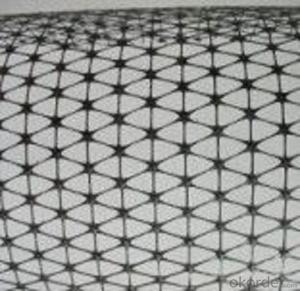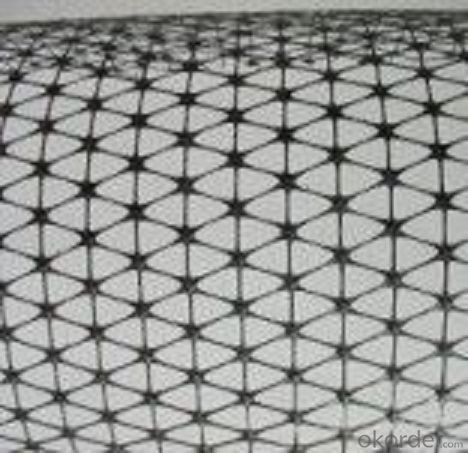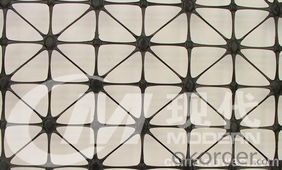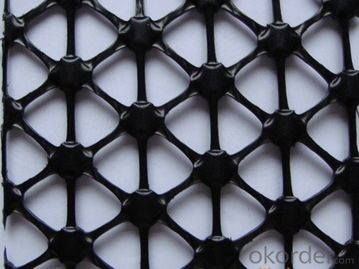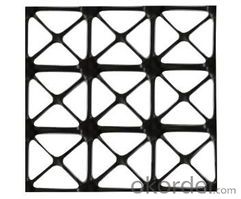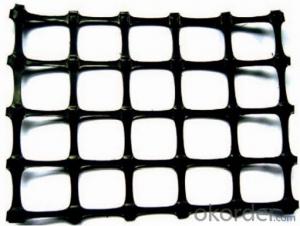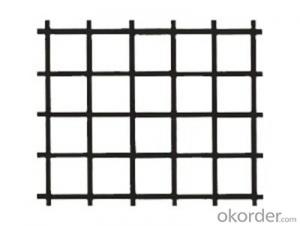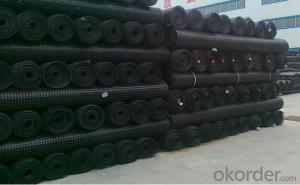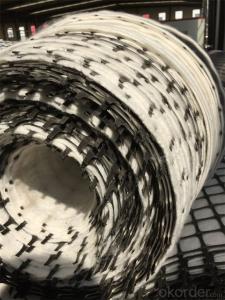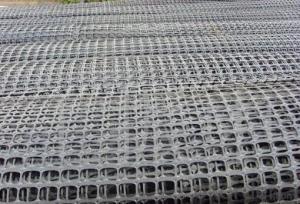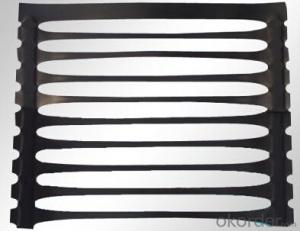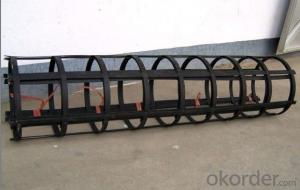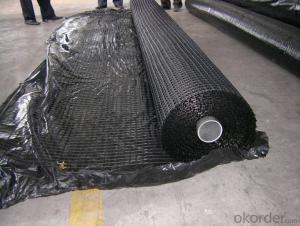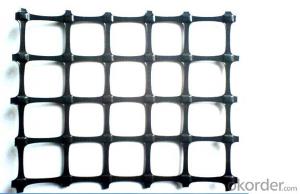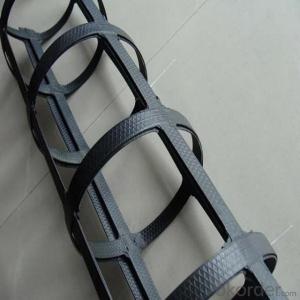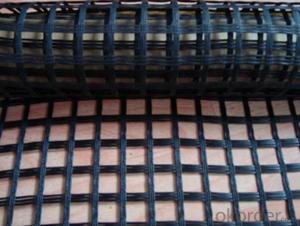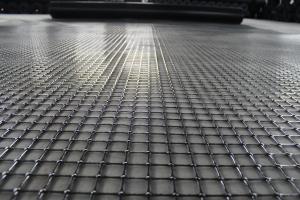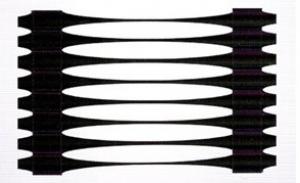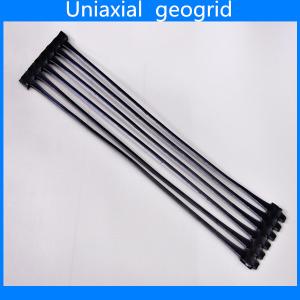HPA Geocells Never Run Multiaxial Plastic Soil Geogrid
- Loading Port:
- Qingdao
- Payment Terms:
- TT OR LC
- Min Order Qty:
- 1 m²
- Supply Capability:
- 100000 m²/month
OKorder Service Pledge
OKorder Financial Service
You Might Also Like
Multiaxial geogrid , made of polypropylene plate , is extruded into sheet and then punched into regular mesh and finally streched into the whole tensile geogrid , triangular mesh is combined orgnaticlly.
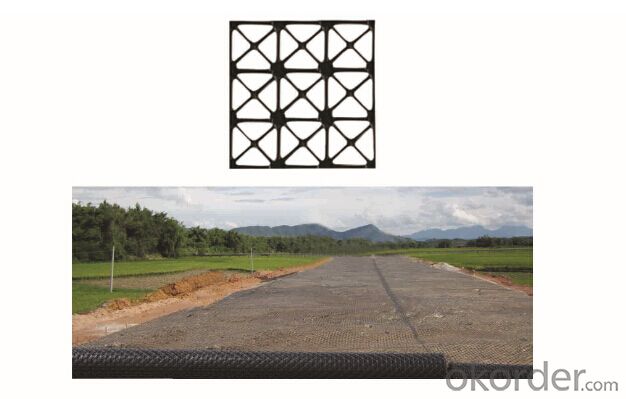
Product introduction:
three axial triangular grid is a new kind of geotechnical reinforcement materials, the latest development because of its stable structure, triangle, two-way than one-way gratings have more reasonable stability, and can bear the load of multiple directions, at the same time more effectively play the role of distributed load, is the ideal choice of the geotechnical engineering reinforcement reinforcement.
Triangular grid main advantages:
1. With the most stable triangular structure, stress is not easy to occur structural deformation;
2. Able to carry more direction load at the same time, not easy to happen node torsion failure;
3. Because of its rectangular section, is not easy to produce and soil slip, the reinforcement effect is better;
4. Because of the node is larger than two-way grille, efficiency is higher, so the node node is not easy to damage;
More than 5. And because of muscle common node, so more saving materials, are more energy efficient.
Three axial triangular grid performance specification (tentative)
The geometric requirements
SAS15
SAS20
SAS25
SAS30
1) the rib length (mm)
32
32
32
32
2) node thickness (mm)
2.2
3
3.8
4.5
3) the rib section shape
rectangular
rectangular
rectangular
rectangular
4) mesh shape
triangle
triangle
triangle
triangle
1) node transfer efficiency (%) or higher
95
95
95
95
2) low strain when the radial tensile modulus (KN/m, @ 0.5% strain) or greater
225
375
430
475
3) quality control tensile modulus (KN/m, @ 2%) or greater
170
230
280
340
4) the mesh stiffness (kg - cm/deg, @ 5.0 kg - cm) or greater
3.0
3.6
5.6
7.8
Carbon black content of p
2%
Note: 1) node efficiency namely load transfer capacity, expressed as a percentage of maximum tensile strength;
2) is according to the radial tensile modulus ISO10319:1996 by measuring the axial plane of the tensile modulus is measured;
3) quality control according to tensile modulus ISO10319:1996 tensile measurement;
4) the mesh stiffness in the horizontal plane, namely to 225 mmx225mm sample center node by applying a torque measurement. Type TG301 geogrid is by our company on the basis of single and double to geogrid, complement each other, independent research and development of low consumption, environmental protection new grille. Type TG301 geogrid is made of PP material by rotating the nose out of a natural law with a mesh plate is arranged, after orientation stretching a forming type terminal grille, we fully consider the in recent years -- new method for calculating the ground settlement, the secant modulus method, repeated calculation with nanjing iwhr geotechnical engineering research institute, many times
Do the destructive and load test to prove:
Type 1. TG301 geogrids stress load, force to disperse bearing rib direction, uniform load distribution
2. The mechanical properties of the single and double to more stable, geogrid tensile modulus and secant durable ability is stronger, its unique network structure is more suitable for the conditions under different environmental stress.
3. The node is gangsu PP welding gratings have absolute stability.
- Q: Are geogrids suitable for use in high water table areas?
- Yes, geogrids are suitable for use in high water table areas. Geogrids are designed to reinforce soil and provide stability, making them a suitable solution for areas with high water tables where soil erosion and instability can be common. Their high tensile strength and ability to distribute loads make them effective in preventing soil movement and maintaining long-term stability in such areas.
- Q: Can geogrids be used in slope protection systems?
- Yes, geogrids can be used in slope protection systems. Geogrids are commonly used to reinforce slopes by providing stability and preventing soil erosion. They can be installed horizontally or vertically to improve the strength of the soil and enhance the overall performance of slope protection systems.
- Q: I would like to ask the geotechnical engineering of highway engineering, geogrid raw materials for the conventional test items, parameters?
- The mechanical properties (including Strip Tensile test, joint / joint width tensile test, solder stick limit peel strength test); sampling frequency: each batch of incoming inspection time, quantity of each test group representing more than 500 volumes
- Q: Can geogrids be used in temporary construction applications?
- Yes, geogrids can be used in temporary construction applications. Geogrids are commonly used to reinforce soil and provide stability, making them suitable for temporary structures such as retaining walls, roadways, and excavation support. They can be easily installed and removed as needed, making them an effective solution for temporary construction projects.
- Q: Are geogrids suitable for use in soft soil conditions?
- Yes, geogrids are suitable for use in soft soil conditions. Geogrids are typically made from high-strength materials such as polyester or polypropylene, which provide reinforcement and stabilization to weak or soft soils. They can effectively distribute loads, improve soil stability, and prevent soil erosion. Geogrids are commonly used in various civil engineering applications, including road and railway construction, embankments, and retaining walls, where soft soil conditions are present.
- Q: What are the factors to consider when selecting geogrids for a project?
- When selecting geogrids for a project, several factors need to be considered. These factors include the type of soil, the load requirements, the desired lifespan of the project, the installation method, and the environmental conditions. Additionally, factors such as cost, availability, and the reputation of the geogrid manufacturer should also be taken into account.
- Q: Are geogrids suitable for use in slope reinforcement during excavation?
- Yes, geogrids are suitable for use in slope reinforcement during excavation. Geogrids provide stability and reinforcement to slopes by distributing the load and preventing soil erosion. They are effective in strengthening the slope, reducing the risk of landslides, and improving overall safety during excavation operations.
- Q: Which is the high price of steel plastic geogrid and fiberglass geogrid
- Geogrid prices, and now the market has a lot of manufacturers of geogrid, geogrid price gap is also great, what the price is reasonable
- Q: What is the profit margin of the production of Geogrid
- Just a lot of manufacturers cut corners, sales of substandard products, such a high profit. Thailand
- Q: How do geogrids help in reducing the risk of slope instability?
- Geogrids help in reducing the risk of slope instability by reinforcing the soil and providing additional strength to the slope. They act as a stabilizing agent by increasing the soil's shear resistance and preventing it from sliding or collapsing. This reinforcement helps in distributing the forces exerted on the slope, reducing the potential for slope failure and improving overall stability.
Send your message to us
HPA Geocells Never Run Multiaxial Plastic Soil Geogrid
- Loading Port:
- Qingdao
- Payment Terms:
- TT OR LC
- Min Order Qty:
- 1 m²
- Supply Capability:
- 100000 m²/month
OKorder Service Pledge
OKorder Financial Service
Similar products
Hot products
Hot Searches
Related keywords
